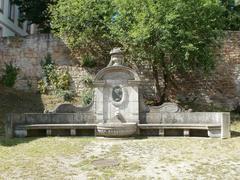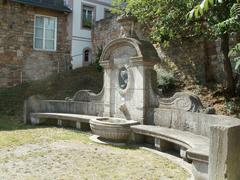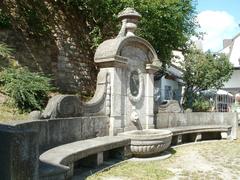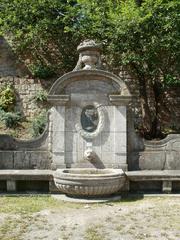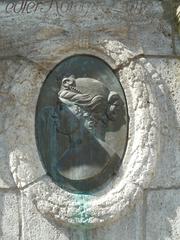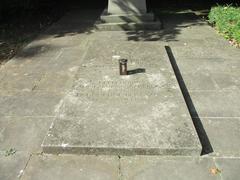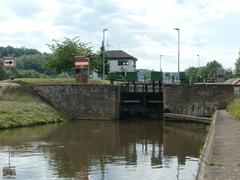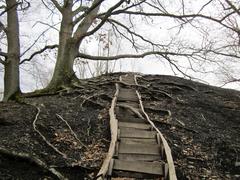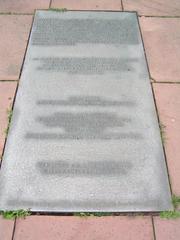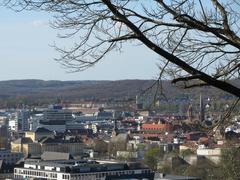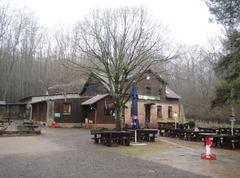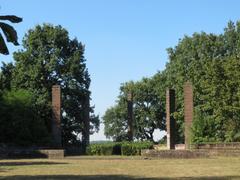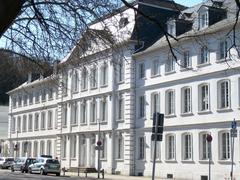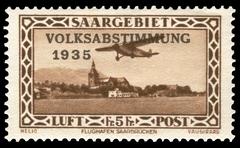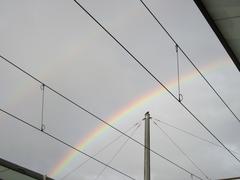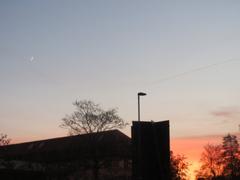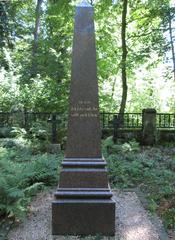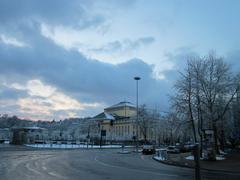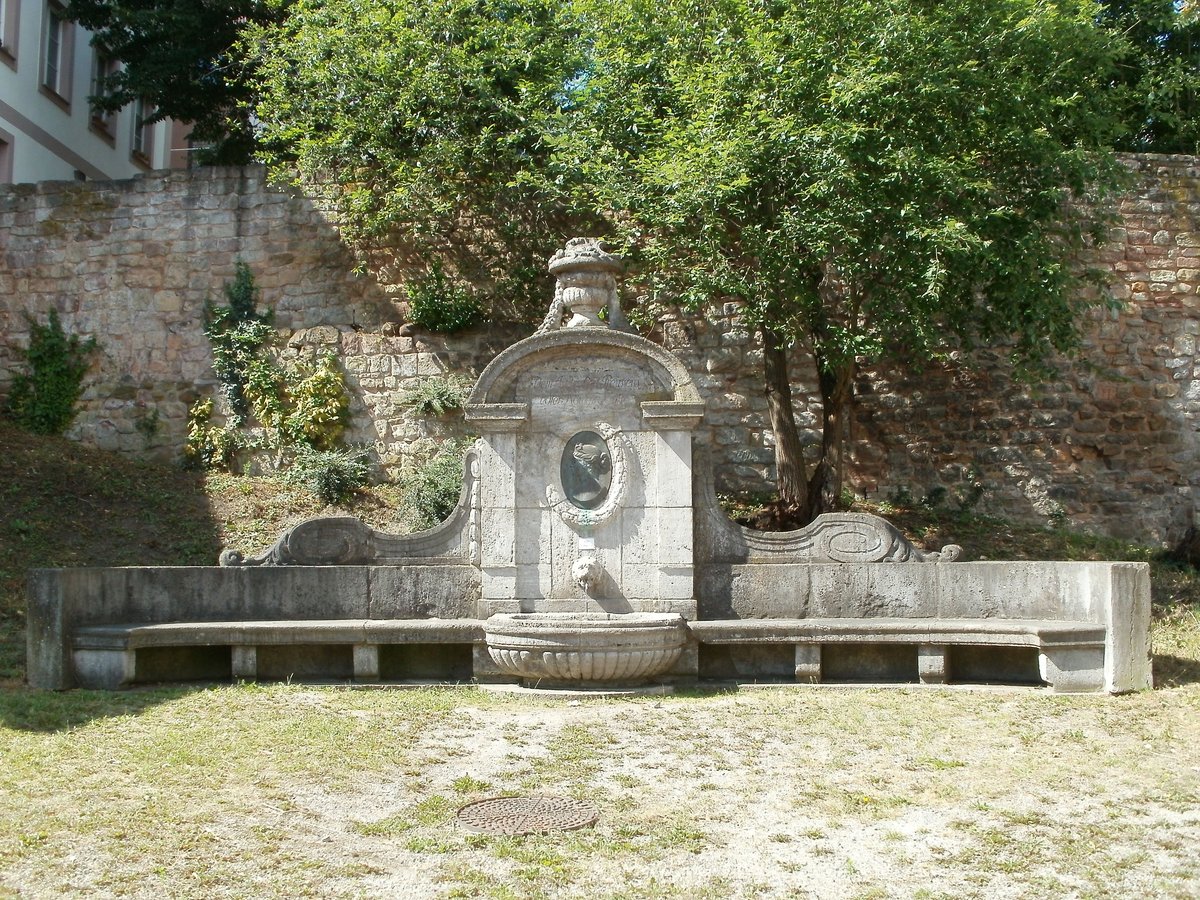
Luisenbrunnen Saarbrücken: Visiting Hours, Tickets, and Travel Guide
Date: 14/06/2025
Introduction
The Luisenbrunnen (Luise Fountain) stands at the heart of Saarbrücken’s old town, representing a blend of historical memory, artistic achievement, and community spirit. Created in 1912 to honor Queen Luise of Prussia, this neobarock monument is both a tribute to a revered queen and a witness to more than a century of urban transformation. Today, the Luisenbrunnen is easily accessible, free to visit, and surrounded by some of Saarbrücken’s most important historical sites, making it a must-see for visitors seeking to immerse themselves in the city’s cultural heritage.
This guide provides a detailed look at the Luisenbrunnen’s history, architectural features, practical visiting information, nearby attractions, and tips to enrich your experience. Whether you are a local, a history enthusiast, or a first-time traveler, the Luisenbrunnen opens a window into Saarbrücken’s layered past and vibrant urban life. For more information, consult the official Saarbrücken tourism website and Komoot’s Luisenbrunnen highlight.
Contents
- Historical Background and Urban Context
- Architectural and Artistic Features
- Visitor Information
- Visiting Hours & Tickets
- Accessibility & Getting There
- Nearby Attractions
- Tips for Visitors
- Community & Cultural Engagement
- FAQs
- Visual Resources
- Conclusion
- Sources
Historical Background and Urban Context
Origins and Dedication
The Luisenbrunnen was erected in 1912 to commemorate Queen Luise of Prussia (1776–1810), celebrated for her bravery and diplomacy during the Napoleonic Wars. The monument’s inscription, “Dem Andenken Preußens edler Königin” (“To the memory of Prussia’s noble queen”), reflects its commemorative purpose. Its creation was championed by the local Verschönerungsverein (Beautification Society), symbolizing both civic pride and Prussian heritage (Komoot; Saarbrücker Zeitung).
Originally, the fountain was placed in the Luisenanlage park, near the Luisenbrücke and within the Luisenviertel, an area shaped by Saarbrücken’s late-19th-century urban development (Komoot). This location made the fountain a focal point for public life and civic celebration.
Urban Evolution and Relocation
Saarbrücken’s rapid urban development and the destruction brought by World War II led to significant changes. The original Luisenanlage was lost to the construction of the city’s expressway, prompting a temporary move to Talstraße in 1959. This location proved unpopular, and after further urban renewal, the fountain found its permanent home in Altneugasse in 1986/1987, nestled near remnants of the medieval city wall and surrounded by greenery (Saarbrücker Zeitung; Mapcarta). The fountain’s journey through Saarbrücken’s changing landscape mirrors the city’s evolving identity.
Political and Cultural Significance
Queen Luise became a symbol of German resilience and virtue, and her image was reinterpreted through various political eras, including the Nazi period and postwar Germany. Today, the Luisenbrunnen serves as a rare and enduring testament to these layers of history, blending remembrance with contemporary urban life (Facts.net).
Architectural and Artistic Features
The Luisenbrunnen is a neobarock masterpiece crafted by architect Ludwig Nobis and sculptor August Kuhn. Constructed from Muschelkalk (shell limestone), the fountain features:
- Basin: A circular sandstone basin typical of the Saarland region, inviting visitors from all sides.
- Central Column: Adorned with reliefs, garlands, floral motifs, and topped by a medallion of Queen Luise.
- Benches: Extended stone benches flank the basin, offering a tranquil spot for reflection.
- Inscription: The neobarock-style inscription enhances the monument’s commemorative character.
Kuhn’s sculptural work is distinguished by allegorical figures representing virtues such as grace, dignity, and compassion (Komoot; Saarbrücker Zeitung). The fountain’s harmonious integration with the nearby medieval wall further strengthens its historical resonance.
Visitor Information
Visiting Hours & Tickets
- Hours: The Luisenbrunnen is accessible 24/7, year-round.
- Tickets: No admission fee; the monument is free to visit (Komoot).
Accessibility & Getting There
- Location: Altneugasse, 66119 Saarbrücken, Germany.
- Nearby Landmarks: Saarbrücken Castle (approx. 200 meters), St. Johann district, Nauwieser Viertel.
- On Foot: Easily reached from the city center, main train station, and adjacent attractions.
- Public Transport: Well-served by nearby tram and bus stops.
- Wheelchair Access: The area is flat and accessible, though some cobblestone streets nearby may require caution for those with mobility challenges (Mapcarta).
Nearby Attractions
- Saarbrücken Castle: A baroque landmark with panoramic views and exhibitions (The Crazy Tourist).
- Museum für Vor- und Frühgeschichte: Archaeology and early history exhibits (Mapcarta).
- St. Johanner Markt: Vibrant square with cafés, shops, and local cuisine.
- Nauwieser Viertel: Creative neighborhood known for its unique boutiques and cultural scene.
Tips for Visitors
- Best Time to Visit: Spring to early autumn (April–September) for lush surroundings and mild weather. Early morning or late afternoon offers optimal light for photography.
- Guided Tours: Join a walking tour covering Saarbrücken’s historical sites, including the Luisenbrunnen (Saarbrücken Tourism).
- Rest & Reflection: Make use of the benches for a peaceful pause.
- Combine with Events: The fountain’s central location allows easy participation in city festivals, markets, and cultural events like Altstadtfest and the International Jazz Festival (Tourismus Saarbrücken).
Community & Cultural Engagement
The Luisenbrunnen is not just a monument but a living part of Saarbrücken’s daily life. Locals and visitors alike enjoy its tranquil setting, and the city’s commitment to preservation ensures the fountain remains a cherished landmark. Regular cleaning, structural assessments, and educational initiatives support its continued relevance (Tourismus Saarbrücken).
Frequently Asked Questions (FAQ)
Q: Do I need a ticket to visit the Luisenbrunnen?
A: No, access is free and there are no entrance fees.
Q: What are the opening hours?
A: The monument is accessible at all times.
Q: Is the Luisenbrunnen wheelchair accessible?
A: Yes, the site is generally flat and accessible, though some surrounding cobblestones may require care.
Q: Are guided tours available?
A: Yes, several walking tours include the Luisenbrunnen. Check with Saarbrücken Tourism for details.
Q: What else can I visit nearby?
A: Saarbrücken Castle, Museum für Vor- und Frühgeschichte, St. Johanner Markt, and Nauwieser Viertel.
Visual Resources
- For high-quality images and a virtual map, see Komoot’s Luisenbrunnen highlight and Mapcarta.
- Use alt tags such as “Luisenbrunnen Saarbrücken fountain historical monument” for accessibility.
- Official tourism websites offer updated photos and interactive maps.
Conclusion
The Luisenbrunnen is a serene yet powerful symbol of Saarbrücken’s rich history and cultural resilience. Free to visit and open at all times, the fountain is a perfect site for reflection, photography, and exploration of the city’s heritage. Its neobarock elegance, central location, and integration with daily life make it a highlight of Saarbrücken’s historic core. Enhance your visit with audio tours from the Audiala app and stay connected through local tourism resources for the latest events and insights.
Discover the enduring charm of the Luisenbrunnen and let your journey through Saarbrücken’s history begin.
Sources and Further Reading
- Discover the Luisenbrunnen in Saarbrücken: A Guide to Visiting, History, and Nearby Attractions, 2025, Saarbrücken Tourism (https://www.saarbruecken.de/tourismus)
- Luisenbrunnen Saarbrücken: Visiting Hours, Tickets, and Historical Significance, 2025, Saarbrücken Town Hall History (https://www.saarbruecken.de/en/town_hall/history)
- Luisenbrunnen Saarbrücken: Visiting Hours, Tickets, and Historical Overview, 2025, Komoot (https://www.komoot.com/de-de/highlight/4302828)
- Luisenbrunnen Saarbrücken: Visiting Hours, History, and Nearby Attractions, 2025, Saarbrücker Zeitung (https://www.saarbruecker-zeitung.de/saarland/saarbruecken/saarbruecken/alt-saarbruecken/ein-denkmal-fuer-die-preussen-koenigin_aid-4809759)
- Luisenbrunnen Saarbrücken: Visiting Hours, Tickets, and Historical Significance, 2025, Mapcarta (https://mapcarta.com/N2288467789)
- Luisenbrunnen Saarbrücken: Visiting Hours, Tickets, and Historical Significance, 2025, Visit Saarbrücken (https://visit.saarbruecken.de/)
- Luisenbrunnen Saarbrücken: Visiting Hours, Tickets, and Historical Significance, 2025, Tourismus Saarbrücken (https://tourismus.saarbruecken.de/en/discovering/top_sights)
- Luisenbrunnen Saarbrücken: Visiting Hours, History, and Nearby Attractions, 2025, Facts.net (https://facts.net/world/cities/50-facts-about-saarbrucken/)
- Luisenbrunnen Saarbrücken: Visiting Hours, History, and Nearby Attractions, 2025, The Crazy Tourist (https://www.thecrazytourist.com/15-best-things-saarbrucken-germany/)
- Luisenbrunnen Saarbrücken: Visiting Hours, History, and Nearby Attractions, 2025, Tapped Out Travellers (https://tappedouttravellers.com/germany/things-to-know-before-visiting-germany/)
